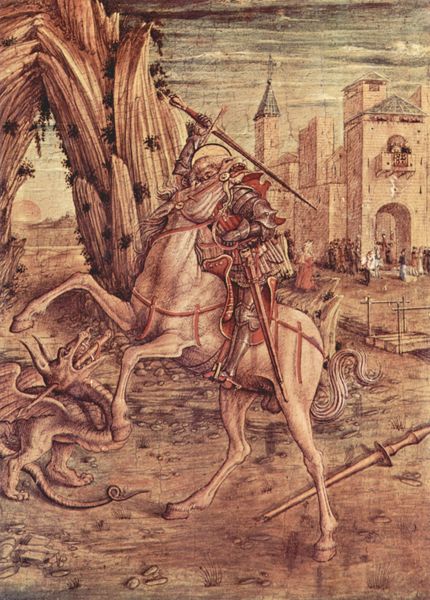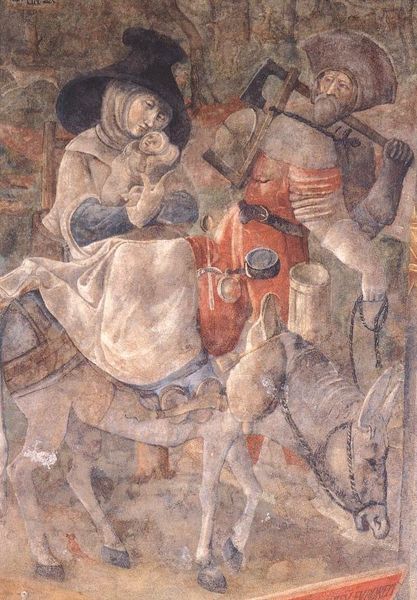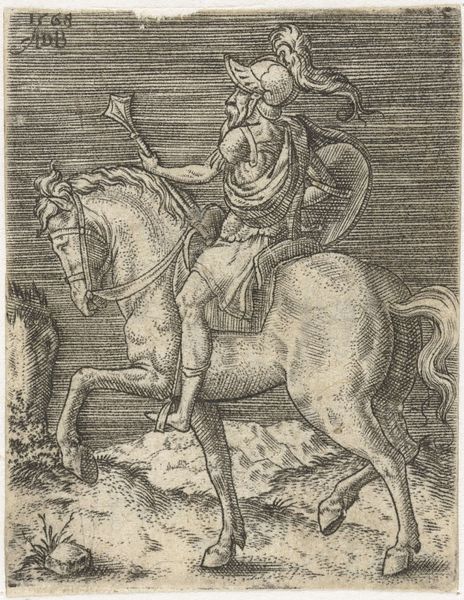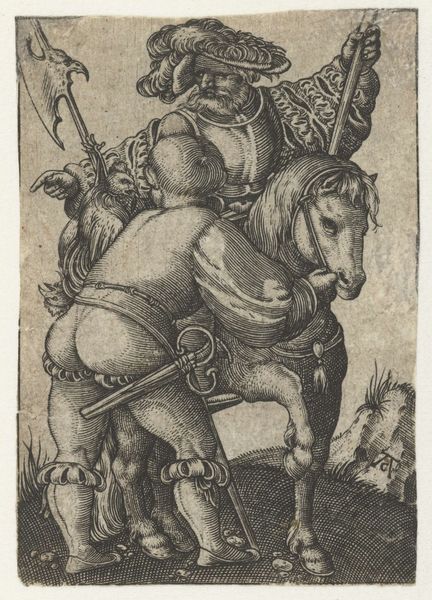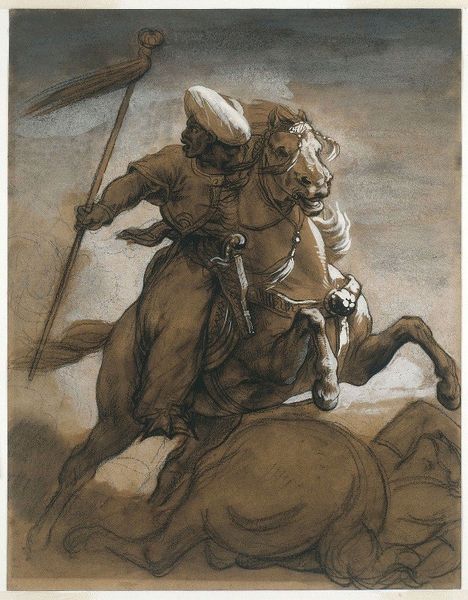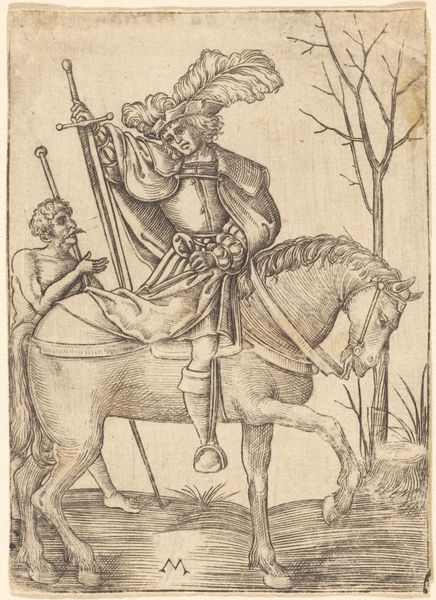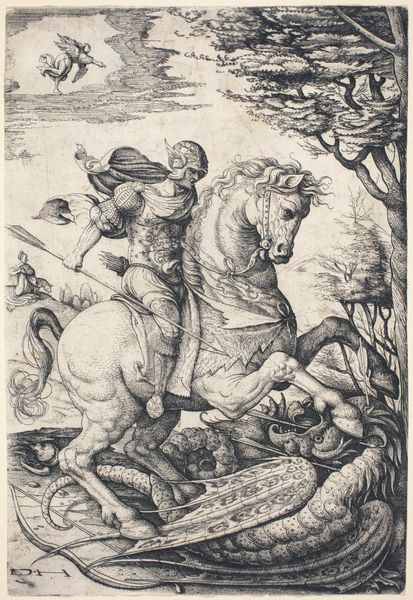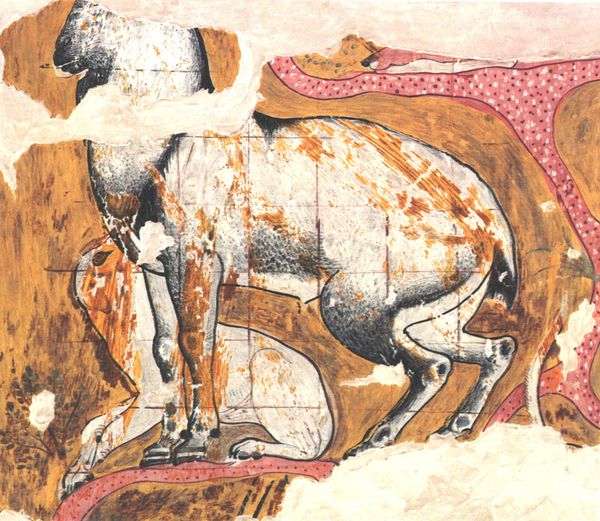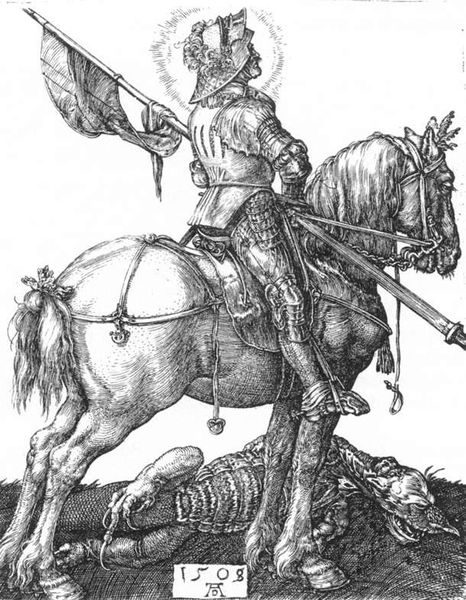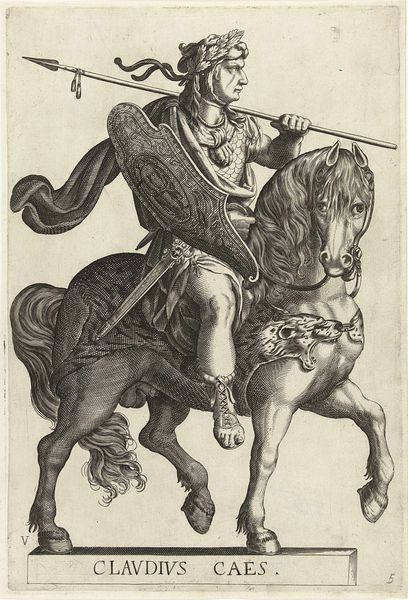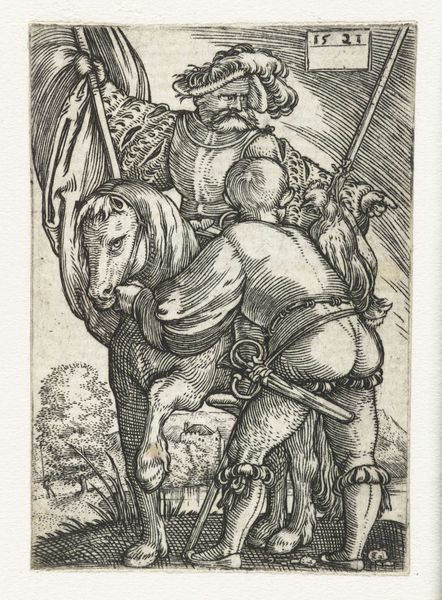
painting, oil-paint
#
portrait
#
narrative-art
#
painting
#
oil-paint
#
figuration
#
oil painting
#
christianity
#
mythology
#
painting painterly
#
genre-painting
#
history-painting
#
academic-art
#
italian-renaissance
Dimensions: 90 x 46 cm
Copyright: Public domain
Curator: Let’s take a closer look at Carlo Crivelli’s “Saint George,” dating back to around 1470, currently residing here at the Isabella Stewart Gardner Museum. Editor: It's surprisingly… static. I mean, given the dramatic subject, there’s an odd sense of stillness. Saint George looks more like he's posing than actively battling the dragon. Curator: But consider what the imagery conveys beyond just surface action. Saint George, representing good, poised above the defeated dragon, evil. The scene is laden with the weight of moral order. He is literally elevated, the symbolic implications resonating within the culture memory. Editor: I get that, and of course the subject is ripe with patriarchal, religious connotations. He's a symbol of masculine dominance, right? This whole dragon-slaying narrative…it can be seen as the violent subjugation of the feminine, the chaotic "other." Curator: One could argue that Crivelli doesn't emphasize violence, per se. His focus is more on conveying power, control, the visual representation of Christian virtue. The symbols are more than masculine assertions, representing protection for the social order. Look at how he positions the princess. She is safe to kneel in prayer due to Saint George. Editor: Fair enough, but I think we can't ignore how these stories reinforced existing hierarchies and inequalities. Think about who typically commissioned works like this, and the messages they wanted to send. Look at how idealized Saint George is portrayed, emphasizing control and the authority of the knight in shining armor. Curator: Right, patronage absolutely shaped artistic narratives. Yet the painting endures as more than just a simple statement. It is an attempt to capture a transcendent concept, embodied through an appealing narrative, despite potential modern misinterpretations. Editor: And isn't that precisely the point, the fact that these images and stories continue to carry cultural baggage even now, demanding new interpretations to counteract how visual representation affected gender, race, and other markers of identity throughout history? It's about critical dialogue, seeing both the artistry and inherent societal biases embedded within it. Curator: Absolutely. It calls for constant reflection as viewers in dialogue with art from different eras. Editor: Yes. A powerful conversation sparked from one seemingly still image.
Comments
No comments
Be the first to comment and join the conversation on the ultimate creative platform.
